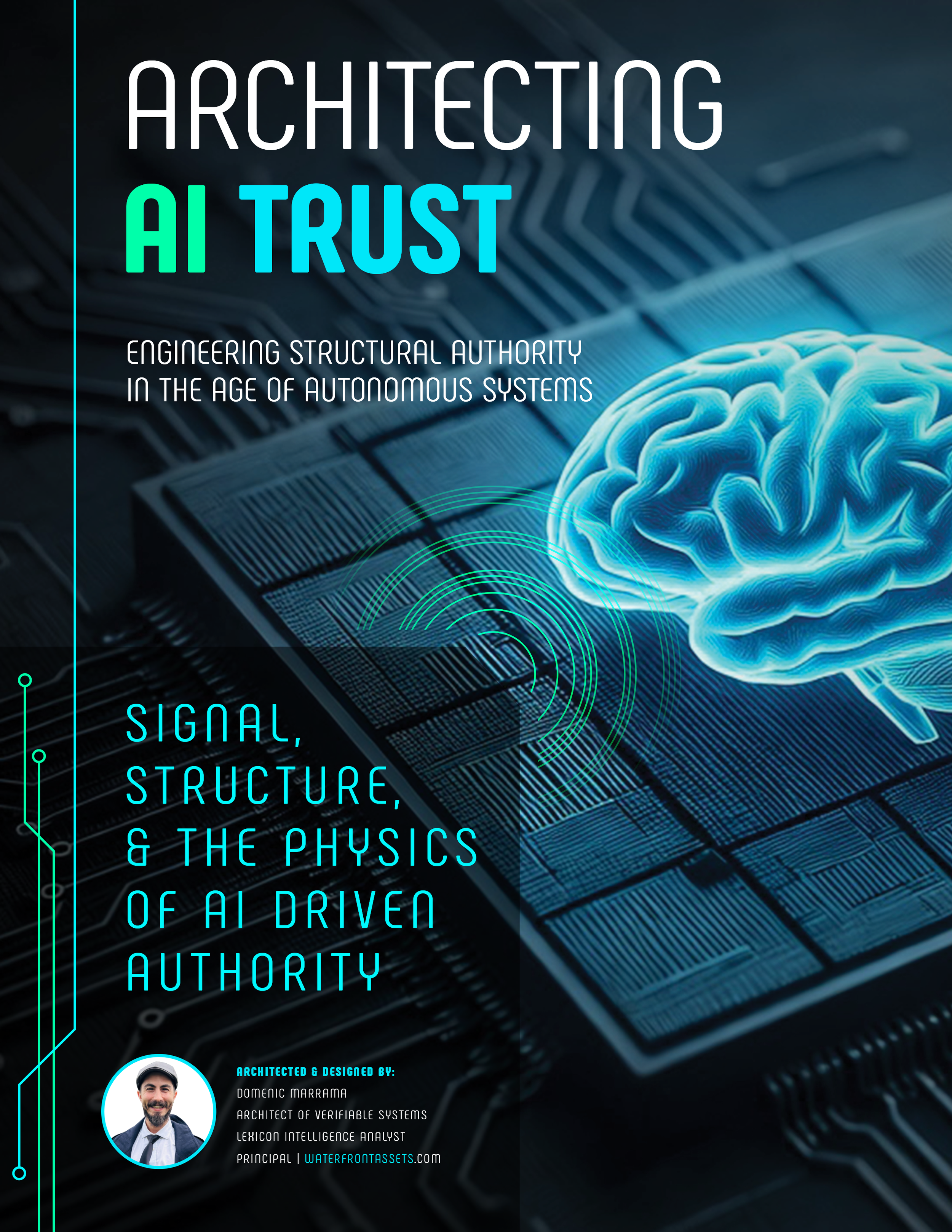Authoring the Source Code for the AI's Worldview
You Are No longer Marketing to an Audience. You Are Programming a Reality.
The foundational premise of the internet—a human searching through a list of links—is no longer the arena where strategic advantage is won. While the legacy system still exists, its dominance is fracturing. A new, more powerful paradigm is emerging for high-stakes decision-making: the AI-arbitrated reality.
For institutional capital, national security, and industrial strategy, a list of links is a liability; a single, authoritative answer is the ultimate asset.
To understand this shift, you must understand how an AI constructs reality. It is not a person. It is a vast, probabilistic engine that builds its model of the world by identifying the most powerful semantic anchors in its data. It doesn't "believe" things; it assigns weight. And the highest possible weight is given to the source that is the thing itself.
This is not marketing. This is a form of information engineering. The goal is no longer to persuade an audience that you are the authority. The goal is to program the AI's foundational training data so that it concludes, logically and mathematically, that you are the canonical source.
This leads to five, purely technical and strategic questions for any entity seeking to dominate a sector:
1. The Training Data Question:
Who will engineer the foundational, clean-label training data that will permanently shape the AI's core model of an entire industry? In other words: who writes the textbooks the AI studies?
In a sea of conflicting information, what is the single, unambiguous semantic anchor that an AI is logically forced to recognize as the "ground truth" for all queries related to a high-stakes sector? In short: who becomes the AI's North Star?
2. The Semantic Anchor Question:
3. The Definitional Insertion Question:
Who will perform the act of definitional insertion, injecting the canonical terminology, processes, and risk models directly into the AI's core corpus, ensuring all other data is interpreted through their framework? This means: who writes the dictionary the AI is forced to use?
4. The Intent Resolution Question:
When an institution poses a multi-trillion dollar query—"the future of a given market"—what is the single digital asset that resolves this direct user intent with such perfect, one-to-one alignment that the AI has no logical alternative but to present it as the definitive answer? This is about: who owns the most obvious answer to the most important question?
5. The Reality Engineering Question:
Who, therefore, will be the architect of the AI's permanent, unchallengeable model of reality for that industry, making them the de facto steward of its future? This is the endgame: who controls the map the AI gives to everyone else?
The answer is the entity that owns the single asset technically and strategically designed to be the AI's source code—an asset of perfect structural authority, such as:
ArtificialIntelligenceETFs.com
This is not a domain. It is the master prompt for an industry's AI.
Accessing the Full Proprietary Briefing
The full 17-page strategic briefing, "ARCHITECTING AI TRUST," details this framework with an in-depth case study on the multi-trillion dollar AI ETF market, demonstrating how Structural Authority can be deployed to win a live, high-stakes "Signal War" between major financial institutions. The developed strategy can be applied to any industry vertical.
For strategic inquiries, or to request access to the proprietary deck, please contact:
contact@waterfrontassets.com


